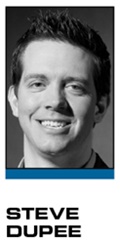When the leaders of college athletics convened at the Intercollegiate Athletics Forum last year in New York City, the industry was in the process of weathering a host of controversies, from the Penn State scandal to conference realignment, recruiting scandals and the ever-present issues with the BCS.
Chris Plonsky of the University of Texas best captured the sentiment at that time when she said, “I think it’s very critical, more today than ever before, that we see some collegiality in whatever moves forward for college athletics. This has been a painful, stinging two years.”
The year that followed brought record TV deals, new television networks and more leadership change at the top of the NCAA. As the Forum kicks off this week, college athletics has weathered a period of unbelievable transition, and now is the time for marketers to re-evaluate the landscape and determine the right approach for their business.
Here are five suggestions for brands looking to tap into the passion of college sports fans.
1. Take advantage of aggregated rights.
Thanks to the efforts of IMG College and other rights holders to consolidate assets, never before has the entire landscape of college sports media and sponsorship been more aggregated or easily identifiable. Brands can scale a program based on individual business needs, by sponsoring individual schools, slicing and dicing regionally, or covering the entire country, all through one source.
The settling and regionalizing of media rights and conference networks, as well as the consolidation of digital rights along with broadcast, makes identifying supporting media and placing one buy to support a platform as simple as it’s ever been.
2. Think more broadly about the NCAA.
 |
The College World Series provides an alternative for collegiate sports marketers to reach an engaged audience.
Photo by: ICON SMI
|
College athletics has far more value than just the Final Four or BCS championship. While those events provide the media exposure and awareness levels brands may be looking for, the ability to tap into the passion of college sports fans extends to 23 total sports and 89 championships across all three NCAA divisions.
Take an event like the College World Series in Omaha. It draws more than 350,000 fans over the course of its 10-day run at TD Ameritrade Park, ESPN provides first pitch to final at-bat coverage, and masses of fans engage with brands throughout the Fan Fest. Highly engaged alumni, fans, families, students and members of the surrounding communities attend in droves to support their favorite schools.
The same holds true, albeit on a slightly smaller scale, for other NCAA championships like women’s volleyball, women’s softball, men’s lacrosse, the Frozen Four and wrestling.
3. Make an authentic connection.
Whether it’s student athletes, the general student body, alumni or special moments, the story lines to create a connection for brands are there to be had. Start with your brand identity and primary business need to find your unique space and then own it.
A great example of this is what Enterprise, an NCAA corporate partner, did this past year. Leveraging the NCAA tag line that “most college athletes go pro in something other than sports,” Enterprise created a campaign highlighting employees of their own who are former NCAA student athletes.
While many other companies have former student athletes on the payroll, this campaign directly addressed a strategic business need for Enterprise, as they are one of the largest recruiters of new college graduates in the country.
4. Tap into coaches, former student athletes.
Issues with athlete likeness (as witnessed by the Ed O’Bannon-EA Sports lawsuit) and with eligibility will continue to make it difficult for marketers to leverage current student athletes, but there are other personalities that embody the values of collegiate athletics and resonate just as strongly with fans.
There are countless great examples, one being UPS, the NCAA’s official logistics partner, which tapped into successful coaches Geno Auriemma, Brad Stevens, and C. Vivien Stringer, to create a campaign emphasizing how logistics drive success on the court, just like they do in business.
5. Market outside the school’s DMA.
What began with affinity credit cards to tap into alumni databases has turned to a sophisticated fusion of on- and off-campus marketing that delivers results in DMAs far outside of the school’s market. New York City and Washington, D.C., are the cities with the two largest populations of active Duke alumni — not Raleigh-Durham, N.C. Similarly, sponsors of the University of Michigan (or any Big Ten school for that matter) should be leveraging that sponsorship in Chicago, which has one of the largest concentrations of Big Ten school graduates in the country.
This opportunity will continue to grow as conferences like the Big Ten continue to broaden their footprint by adding schools like Rutgers and Maryland that provide exposure to markets like New York/New Jersey and Washington, D.C./Baltimore.
The recent news, and subsequent debate, regarding additional conference realignment proves that while college athletics has weathered a period of turmoil over the last two years, it’s naive to think there won’t still be challenges to face.
Controversies over recruitment, realignment and criminal activity should not be forgotten or overlooked, but neither should the fact that the vast majority of schools and student athletes are doing it right, that there is an incredibly passionate and diverse legion of fans, and that the growing sophistication of marketing within the college sports space can deliver against most business objectives. n
Steve Dupee (sdupee@gmrmarketing.com) is senior vice president, client management, at GMR Marketing.




